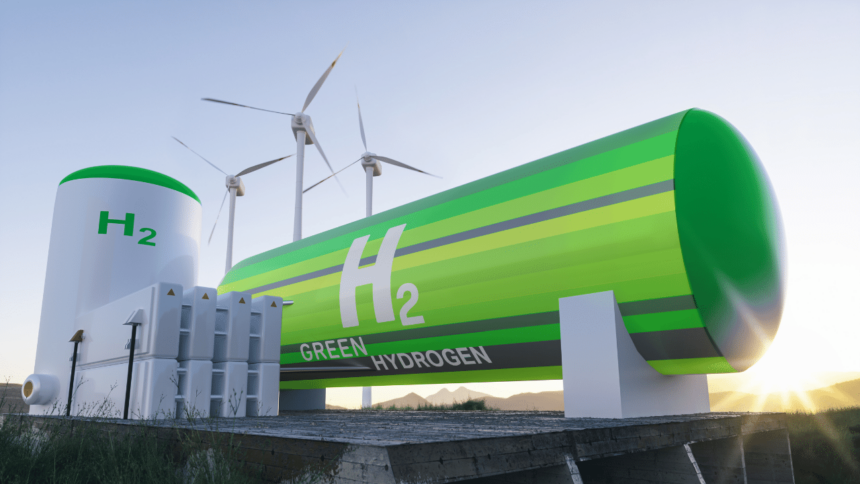A National Council report says the emerging green hydrogen industry is misunderstood, and that situation threatens to hinder the country from generating maximum returns.
“Developing the green hydrogen sector will require large-scale solar and wind installations, housing, roads, and additional port infrastructure,” the report reads, underscoring big logistical needs to support this industry.
The Parliamentary Standing Committee on Agriculture, Environment, and Natural Resources also highlighted the domestic skills gap, which could be a barrier to rapid development of the sector.
Internal research done for the government during the compilation of the Synthetic Fuels Strategy by McKinsey & Company says, 62% low-skilled workers, 27% manual labour, and 11% highly skilled workers will be needed by 2030 for the development of the hydrogen sector in Namibia.
“Unskilled jobs and certain low-skilled jobs, for example, technicians, can be filled from the unemployment pool if relevant upskilling and training programmes run by the developers are in place; no government-supported programmes [are] expected here. Major talent gaps are expected for skilled jobs, e.g. engineers and experts, due to the limited supply of new graduates under the ‘business as usual’ scenario, which might necessitate the development of tailored strategic responses to bridge the gap,” the report states.
The report says the Green Hydrogen Strategy was developed as part of the Harambee Prosperity Plan II and outlines the potential for green hydrogen to decarbonise sectors like mining, strengthening energy security, and generating substantial revenue from exports.
Yet, despite these aspirations, green hydrogen production requires an immense scale of renewable energy, projected at up to 750 TWh per year by 2050, a leap from the country’s current 1.33 TWh capacity in 2020.
Infrastructure
In recent years, the country has been attracting significant foreign investment.
The European Investment Bank has committed up to 500 million euros in concessional finance, while multiple memoranda of understanding have been signed with international entities, including those from Germany, Belgium and Japan.
Hyphen Green Hydrogen Energy, a major player in this sector, is working closely with the Port of Rotterdam to create a master plan for hydrogen infrastructure at Lüderitz. This includes facilities for importing massive wind turbine blades and other essential equipment. While this may sound enticing, the committee warns the government to avoid excessive debt to support infrastructure, as demand uncertainties could jeopardise economic returns.
Potential
The standing committee’s report also emphasised that green hydrogen offers Namibia a potential economic boost by positioning it as a net exporter of energy and hydrogen derivatives.
Green hydrogen commissioner James Mnyupe says Namibia’s gross domestic product (GDP) could see a 34% increase by 2030 and 50% by 2040, largely from export revenue and job creation.
This economic growth would benefit local communities, providing a much-needed uplift through new employment opportunities, with a direct and indirect impact on roughly 1 000 jobs in the green hydrogen sector, the report added.
However, this is reportedly unlikely to directly alleviate Namibia’s current energy costs or supply issues, as the sector’s primary market will be international, with envisaged exports to Europe, China, Japan and South Korea.
“Green hydrogen will provide jobs but may not reduce domestic electricity costs or dependency on imports in the near future,” the report warns, highlighting a need for balanced expectations from this sector.
Hurdles
While industry is highly decorated for its potential environmental benefits, the country’s development of the sector will face complex environmental challenges.
This was said by the Erongo governor, Neville Andre, during his meeting with the committee.
“Land availability is a significant constraint, particularly in Erongo region, where much land is protected,” said Andre.
The region, which has been dubbed the ‘home of green hydrogen,’ hosts several pilot projects yet it struggles with land limitations and skills shortages, he added.
Andre also stressed the importance of local involvement in green hydrogen projects, noting there are nine projects in the region – both public-private and fully private partnerships – with one providing 10% ownership to the local community.
These partnerships are intended to bolster community support and ensure benefits are distributed to the residents.
In addition to land use, the report identified key regulatory needs that are still to be addressed.
Currently, there is no comprehensive legal framework for green hydrogen, with missing regulations for local content, fiscal frameworks, and occupational safety measures.
“Namibia urgently needs legislation to govern green hydrogen activities, including incentives for local businesses and regulations for the safe production and exportation of the commodity,” the community recommended.
Recommendations
Considering these findings, the committee proposed several recommendations, including that the mines and energy ministry accelerates renewable energy installations and protect consumers from potential energy price increases due to green hydrogen production demands.
Additionally, tax incentives for imported renewable energy equipment and a streamlined permitting process for project infrastructure, could further reduce production costs and promote local involvement.
Recognising the need for workforce readiness, the committee also urged the ministry of higher education to establish technical training programmes specifically tailored to meet the needs of the green hydrogen sector.
“To ensure a sustainable green hydrogen future, the government engages communities, traditional authorities, and conservancies in planning, especially in land allocation and project siting. Moreover, the creation of specialised environmental and labour commissions would ensure both the environmental impact and labour conditions in the sector are strictly regulated and monitored,” suggested the committee.


